Birth of the Nile River: Sources and Tributaries
The Nile, one of the world's great river systems for trade and agricultural production. Learn more about the river and its journey our across Egypt. An Antipodean travel company serving World Travellers since 1983 with small group educational tours for senior couples and mature solo travellers.
3 Apr 23 · 7 mins read
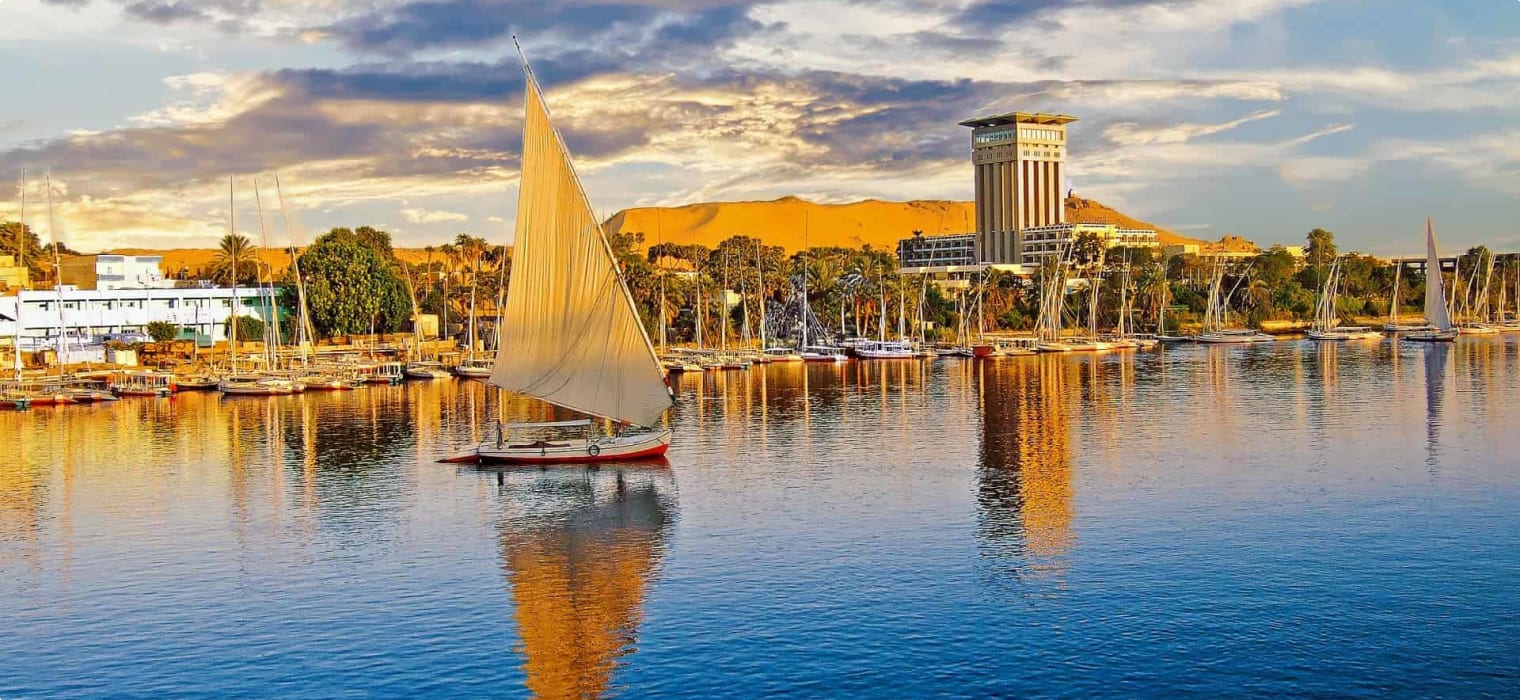
Birth of the Nile River
The Nile, recognized as the longest river globally, stretches over 6,800 km from south to north through East Africa, traversing or bordering 11 countries such as Burundi, Tanzania, Rwanda, the Democratic Republic of the Congo, Kenya, Uganda, Sudan, Ethiopia, South Sudan, and Egypt. Encompassing a vast drainage area of approximately 3 million square km, the Nile basin covers about a tenth of Africa’s total landmass.
The current configuration of the Nile emerged relatively recently, around 25,000 years ago, stemming from geological shifts. Overflow from Lake Victoria initiated the formation of a river channel flowing northwards, ultimately joining waters from Ethiopia at the location of present-day Khartoum. This convergence fused the White Nile and the Blue Nile, culminating in the Nile’s journey to the Mediterranean Sea, consolidating the drainage network from Lake Victoria to the Mediterranean.
Historically, the Nile had a shorter course around 30 million years ago, believed to have originated between 18° to 20° N latitude, with the Atbara River as its primary headstream, along with the White Nile and the Blue Nile as significant tributaries.
This piece delves into the genesis of the Nile by tracing the paths of its three primary tributaries: the White Nile, the Blue Nile, and the Atbara. It serves as foundational material for Odyssey Traveller’s 18-day small group tour of Egypt, designed for mature and senior travellers. During this expedition, participants embark on a four-day cruise along the majestic Nile River, offering a unique vantage point of Egypt’s iconic landmarks, statues, and antiquities, encapsulating millennia of history and culture along the riverbanks. Exploratory visits to Luxor, the Valley of the Kings, and Kom Ombo enhance the understanding of the Nile’s pivotal role as a life-sustaining artery for the Egyptian populace.
The insights presented in this narrative draw heavily from Terje Tvedt’s seminal work The Nile: History’s Greatest River.

The Source of the Nile
The Nile River, known for its significance in ancient times and its vital role in the development of Egyptian civilization, has long captivated scholars and travellers alike. While many refer to Lake Victoria in Central Africa as the primary source of the Nile, its actual birth is a complex process that stems from various feeder rivers merging to form this legendary river.
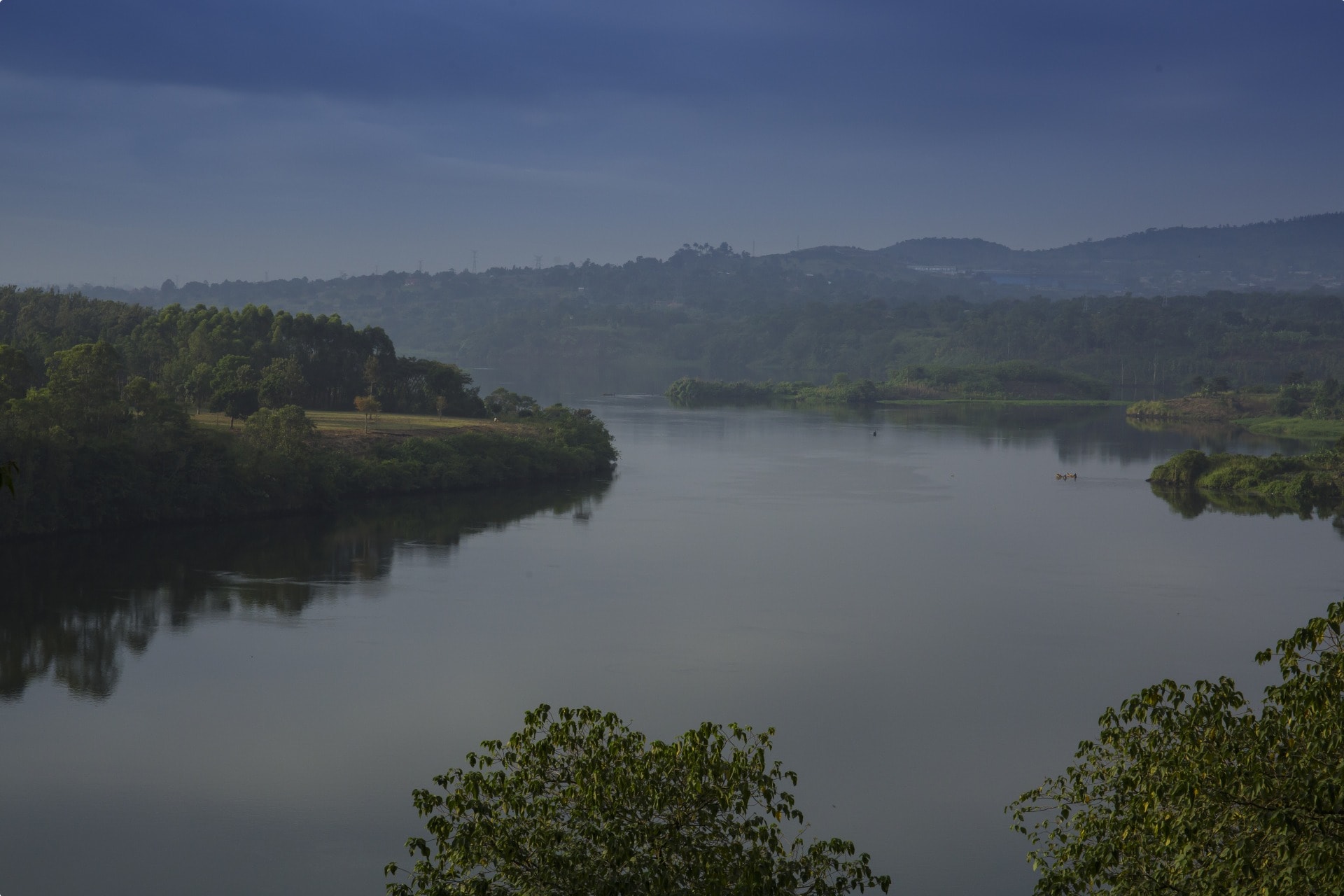
One of the main tributaries contributing to the Nile’s formation is the Kagera River, originating in the highlands of Burundi near Lake Tanganyika. Despite centuries of exploration and debate, pinpointing the longest tributary leading to the Nile’s source remains contentious, with the Nyabarongo River in Rwanda and the Ruvyironza being prominent contenders.
These rivers, originating in the western mountains of the Nile Basin, benefit from the region’s exceptional meteorological conditions, characterized by frequent rainfall and an average annual precipitation of 5 meters. This abundance of water ensures a consistent flow in the Nile, even when other rivers in Ethiopia experience seasonal fluctuations and dry spells.
The White Nile
The White Nile originates in Lake Victoria, flowing northwards to meet the Blue Nile at Khartoum. Named for its clay sediment that gives it a pale white hue, it passes through sections known by various names, including Victoria, Albert, and Mountain Niles.
Flowing from Lake Victoria at Ripon Falls near Jinja, Uganda, the White Nile, also called the Victoria Nile for this stretch, meanders northward for around 500km. It then travels through the shallow Lake Kyoga, weaving through swamp vegetation before heading westward to the Murchison Falls, eventually reaching the northern tip of Lake Albert.

Continuing its journey northward as the Albert Nile through Uganda, the river widens and slows down, flanked by swampy growth. Crossing into South Sudan at the Fola Rapids below Nimule, it transforms into the Bahr al Jabal or Mountain Nile.
For approximately 1000km, this part of the river, enriched by short tributaries on both banks, traverses the level plains of South Sudan, struggling to contain the large influx of water during the rainy season. The overflow spreads across the plains, giving rise to the expansive Sudd region, one of the largest swamps globally, where about half of the water is lost to evaporation and transpiration.
After merging with the Bahr al Ghazal near Lake No, the main flow shifts eastward. The addition of the Sobat River at Malakal marks the unified White Nile. Progressing as a tranquil, wide stream, the river maintains a consistent water flow due to its gentle slope and minimal variation. Despite significant water loss from evaporation and seepage in the wide, shallow valley, the White Nile continues its journey without tributaries until reaching Khartoum, Sudan, where it unites with the Blue Nile, forming the Nile River.
In a fascinating hydrological phenomenon, during autumn, the abundant waters of the Blue Nile temporarily impede the White Nile’s flow. As the water levels of the Blue Nile recede through spring, the pent-up water from the White Nile cascades towards Egypt. This seasonal distribution of water has sustained life and agriculture in the region for millennia.
The Blue Nile
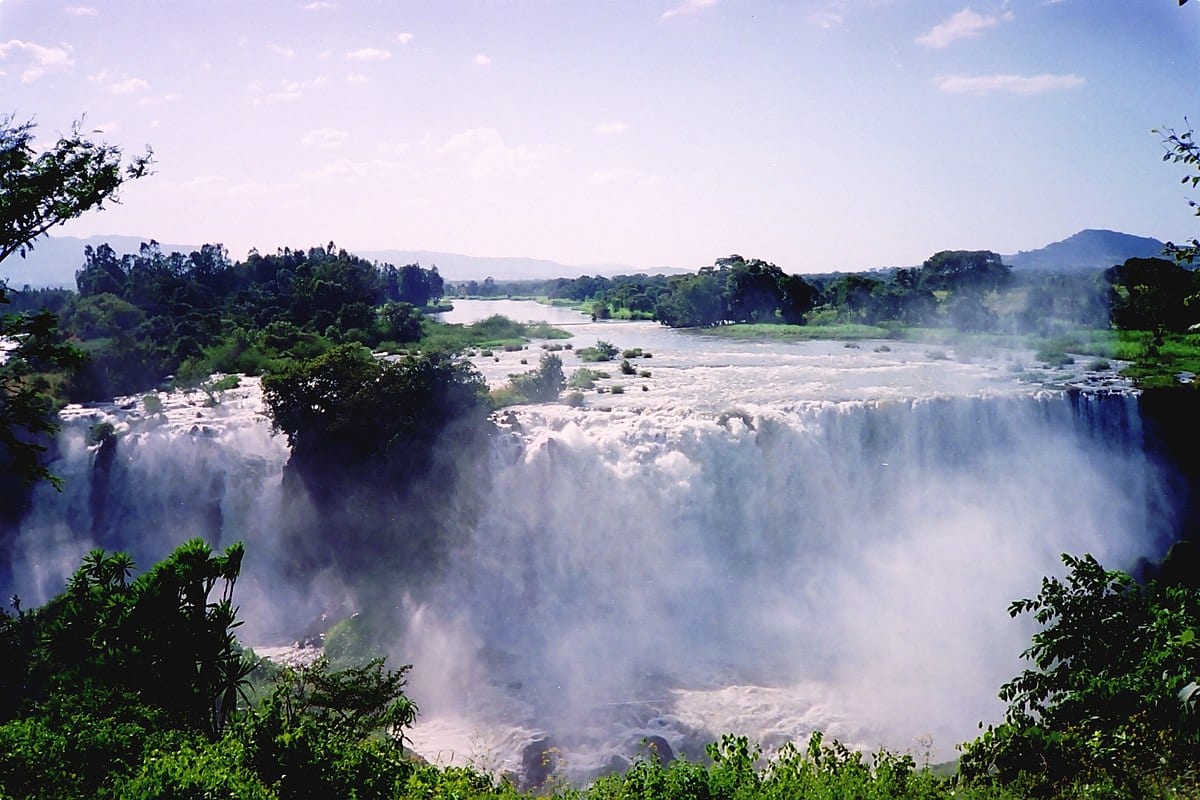
Flowing approximately 2,500km north-westerly from its sacred source in the Ethiopian highlands at an elevation of 6,000 feet above sea level, the Blue Nile, known as the Abay in its initial stream, cascades down to Lake Tana, an expansive body of water spanning about 2,000 square kilometers. Leaving the lake in a south-easterly direction, the Blue Nile navigates through a series of rapids before meandering through the 400km long Grand Canyon of the Nile, gathering waters from various tributaries such as the Wanga, Bashilo, Walaga, Handassa, Tul, and Sade Rivers across northwest Ethiopia.
Upon crossing the border into southern Sudan, the river maintains its northwest course for approximately 650km, augmented by the Dinder River joining from the right bank at Dinder. Ultimately, the Blue Nile converges with the White Nile at Khartoum after its tumultuous journey. Notably, the Blue Nile’s flow exhibits significant fluctuations throughout the year; during the flood season in autumn, it stands as the primary tributary of the Nile, contributing about 80% of the river’s water and sediment load. At this time, it discharges nearly 90% of its total annual water volume, contrasting with its subdued flow for the remainder of the year.
The Atbara
The final significant tributary that feeds into the Nile is the Atbara River, which originates in Ethiopia to the north of Lake Tana at elevations ranging from 6,000 to 10,000 feet above sea level. Traveling a distance of 800 km in a northwesterly direction, it ultimately merges with the main Nile stream around 300 km north of Khartoum. Along its course, the Atbara River is nourished by its primary tributaries, the Angereb and the Tekezē.
Similar to the Blue Nile, the Atbara experiences notable fluctuations in water volume, with significant rises and falls each year. Overall, it accounts for over 10 percent of the Nile’s annual flow, with the majority occurring during the flood season, transforming it into a substantial, turbid river during this period. However, it significantly diminishes and nearly dries up during the summer months, dwindling to a series of small pools.
Following the Atbara’s confluence, the Nile traverses almost 2,700 km through northern Sudan and Egypt towards the Mediterranean Sea without adding any additional water from other sources. This characteristic sets it apart, as it undertakes this journey through one of the world’s driest and hottest terrains — a desert landscape — without receiving replenishment from other water bodies, making it a truly unique phenomenon in the realm of river systems.
Nile Cruise Tour
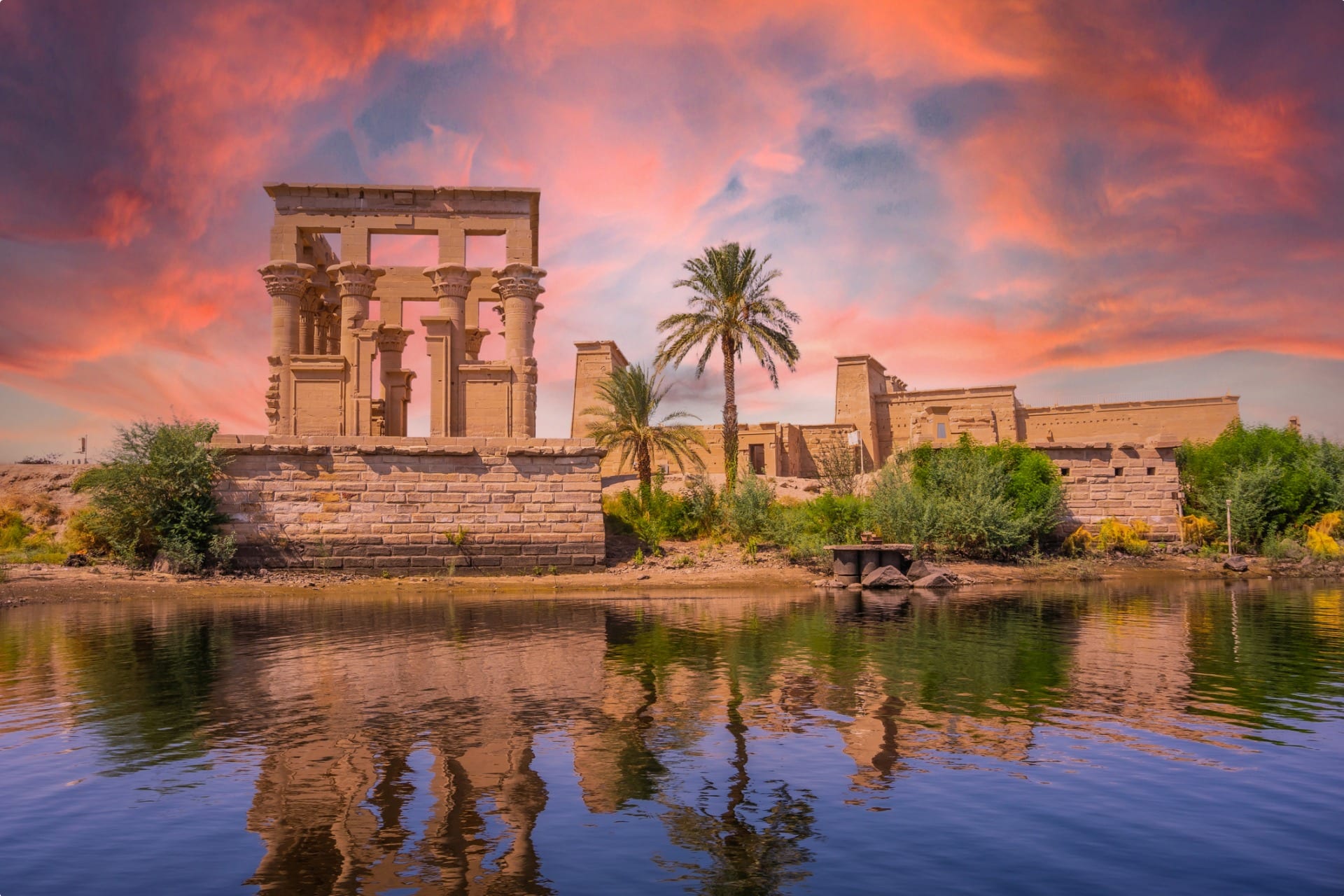
Embark on a captivating 4-day Nile River cruise offered by Odyssey Traveller as part of an immersive 18-day escorted small group exploration of Egypt’s historical and cultural treasures. Tailored for mature-aged and senior travellers, this unique tour goes beyond the ordinary by delving into the depths of ancient Egypt’s legacy.
While some tour companies merely skim the surface of archaeological wonders like the Giza pyramids, our expedition ventures further, encompassing not just the grandeur of the past but also modern marvels such as the Aswan Dam and iconic sites like Tahrir Square. These contemporary landmarks serve as testaments to Egypt’s enduring significance in the annals of civilization.
Join Odyssey Traveller on this enlightening journey as we stand before the time-honored pyramids stretching from Luxor to Aswan, marveling at their architectural precision and grandeur. Engage in discussions about Egypt‘s current affairs and achievements, bridging the ancient with the modern.
During the cruise along the legendary Nile, captivating shore excursions beckon, offering glimpses of Luxor, the mystical Valley of Kings, and the intriguing Kom Ombo temple. Through these excursions, we unravel the profound relationship between the Nile and the Egyptian people—a bond that has sustained and shaped the nation through the ages to the present moment.
For those seeking more adventures, consider exploring our Morocco, Jordan or Iran tours before embarking on this transformative journey through the timeless wonders of Egypt with Odyssey Traveller.
Odyssey Traveller has been serving global travellers since 1983 with educational tours of the history, culture, and architecture of our destinations designed for mature and senior travellers. We specialise in offering small group tours partnering with a local tour guide at each destination to provide a relaxed and comfortable pace and atmosphere that sets us apart from larger tour groups. Tours consist of small groups of between 6 and 12 people and are cost inclusive of all entrances, tipping and majority of meals. For more information, click here, and head to this page to make a booking.
Articles about Egypt published by Odyssey Traveller.
- Uncovering Ancient Egypt: What we can learn from Egyptologists
- From Cairo to NAC: Egypt builds a new capital city
- Questions about Egypt: The Definitive Guide
- Egyptian Linen Treasures
- Discover Egypt with ten great books
- Cairo development site reveals ancient statue
- The time to visit Egypt is now
- The Rosetta Rosetta Stone: Decoding the Secrets of Ancient Egypt
External articles to assist you on your visit to Egypt
Related Tours
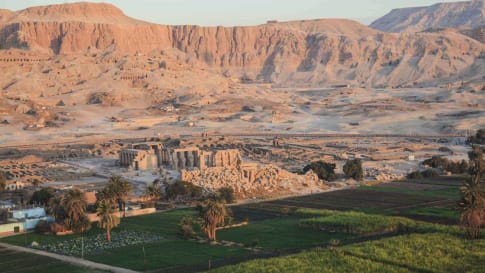
18 days
Nov, JanEgypt tour: escorted small group history & cultural tour of Egypt
Visiting Egypt
Our small group program for senior and mature couples and solo travelers takes us to contemporary feats such as the Aswan Dam and also to current crucibles of the Egyptian experience such as Tahrir Square. Proof, were it needed, that Egypt’s role as the pivot of civilisation is far from ended. There is the opportunity to visit our Morocco, Jordan or Iran tours before embarking on this tour of Egypt.
From A$12,950 AUD
View Tour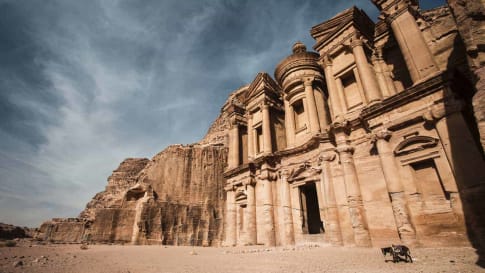
9 days
Jan, OctAncient History of Jordan | Escorted Small Group Tour
Visiting Jordan
Explore Jordan, visiting its capital city, Amman Jordan, the ancient Desert Castles, Petra and the Dead Sea on a small group package tour for mature and senior travellers travelling as a couple or Solo.
From A$6,750 AUD
View Tour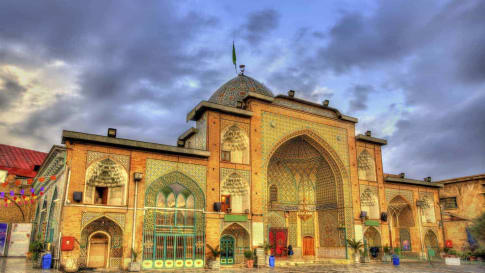
17 days
Sep, Nov, AprIran Culture and History Escorted Small Group Tour for seniors
Visiting Iran
Unlike its neighbours to the west and northwest, Iran had not adopted Christianity and it was the explosive spread of Islam and its ready adoption, without the Arabic language or customs, which helped unite the culture and greatly enrich Persian heritage. This small group tour program includes the great cities of Iran, historic sites, mosques, gardens, bazaars and teahouses for couples and solo travellers.
From A$11,825 AUD
View Tour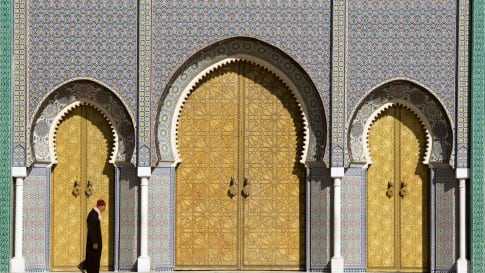
20 days
Apr, Oct, MarMorocco tour for senior travellers
Visiting Morocco
Embark on an unforgettable journey through Morocco: A Gateway to a world of vibrant colors, cultural diversity, and endless wonder. Join our escorted small group tour designed for senior travellers, whether you're a couple or a solo adventurer, and immerse yourself in the captivating allure of Casablanca, Fez, Meknes, Rabat, Marrakech and beyond. Experience the richness of Moroccan traditions and heritage as we explore this enchanting destination.
From A$11,915 AUD
View TourRelated Articles
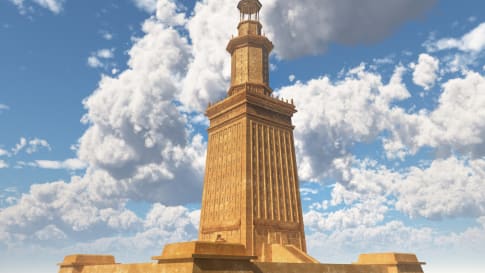
Alexandria, Egypt
Article for senior couples and mature solo travellers curious about Egypt, Greek and Roman history. Including the links to Venice and the trade in Spice and grain. Join a small group educational tour to learn and discover more.

Caesar and Cleopatra in Egypt
Learn about the Roman Emperor Caesar exploring Egypt and the historians interpretation of the relationship with Cleopatra. An Antipodean travel company serving World Travellers since 1983 with small group educational tours for senior couples and mature solo travellers.

Nile River Cruise
The Nile River is the longest river in the world at 6695 kilometres long. Flowing from Uganda, through eleven countries, through to Egypt, it empties into the Mediterranean Sea.

Questions about Egypt for senior travellers.
A small group tour to explore what remains of ancient Egypt. Visit Cairo, Luxor and the valley of the King and Queen plus Alexandria. A tour for senior and mature travellers.
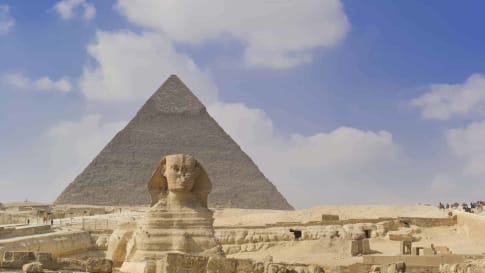
The Pyramids and the Sphinx
Egypt is home to one of the only remaining wonder of the Ancient World: The Great Pyramids of Egypt. The pyramids are monumental tombs for pharaohs from the 4th dynasty and relics of Egypt's Old Kingdom era, constructed around 4,500 years ago.
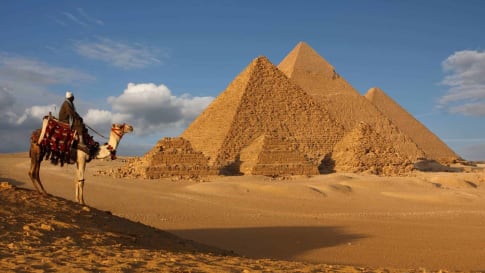
Uncovering Ancient Egypt: What we can learn from Egyptologists
In this article, we will discover some of the pioneers of Egyptology, the great archaeologists, excavators and linguists who have helped us explore, understand and protect Ancient Egypt and its heritage.
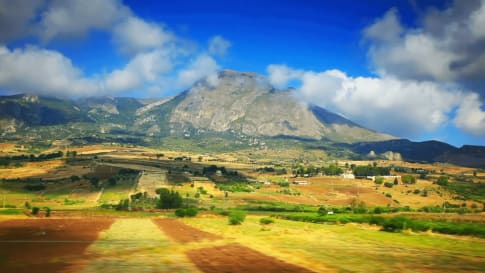
Early History of Sicily: From the Phoenicians to the Arab Conquest
Early History of Sicily: From the Phoenicians to the Arab Conquest (800 BC to the 10th Century) Sicily in Southern Italy is the largest island in the Mediterranean, separated from the mainland by the Strait…

Mediterranean Islands: Malta, Sicily, Sardinia and Corsica
Malta, Sicily, Sardinia and Corsica: An Educational Journey through Western Mediterranean This article takes you on a journey through the beautiful islands of the western Mediterranean – Malta, Sicily, Sardinia and Corsica – by tracing…

The Phoenicians and Purple Dye
Article supporting tours to Morocco, Tunisia, Spain, Sicily and Crete. The Phoenicians where one of the empires controlling the Mediterranean sea from the 11th to 13th century. This article is for small group educational tours for senior couple and mature solo travellers joining a program.


